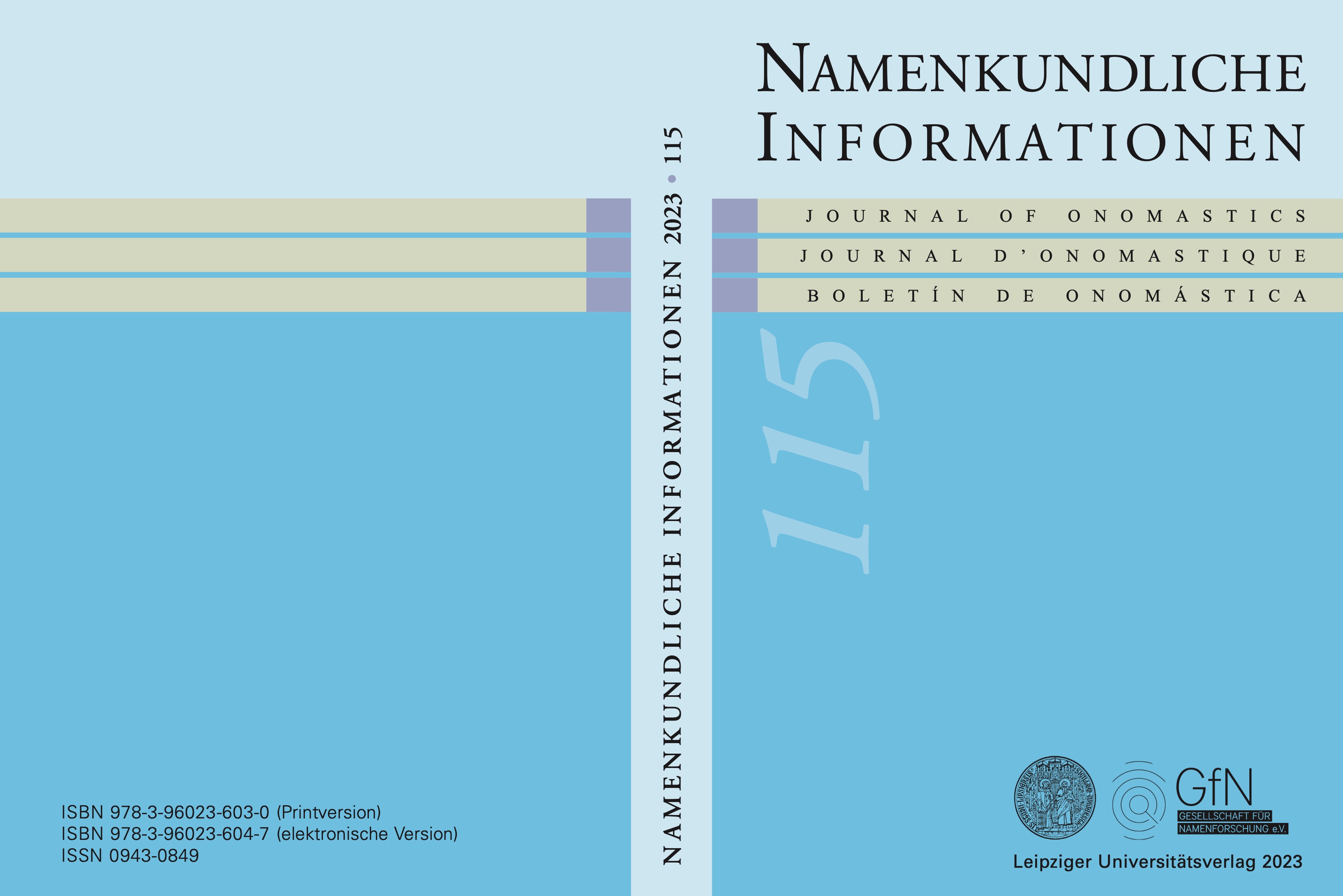Zum Aufwuchs des Namengutes in frühmittelalterlichen Adelsgruppen: die Merowinger
(Themenschwerpunkt)
DOI:
https://doi.org/10.58938/ni733Abstract
The article discusses the names and name elements of the Merovingian dynasty. There were a number of name elements such as chlod-, child-, -mer/mer-, presumably original to the main Merovingian branch of Childeric and Clovis, but there were also the names of their deceased relatives. My focus is on the increase in names and name elements. (1) Theud-names were more than likely of Visigothic origin, presumably from a first marriage of Clovis with a daughter of the Visigothic king Theoderic. (2) An increase in Burgundian names is well-known, but (3) particularly the -oald-names must have an Agilolfing origin. (4) Sigibert and other sigi-names were conveyed to the royal house by the kings ‘of Cologne’; they are supposed to have stemmed from a Lower Rhine tradition. (5) The name Dagobert too had a non-Merovingian origin, presumably from a princely or royal family of the Chamavi, a Frankish tribe on the Lower Rhine. (6) Perhaps the -harja-names were also an increase in the name elements. Furthermore, the article deals with the names of (alleged Merovingian) pretenders. Names of the members of the royal dynasty and the increase in their names served to express claims to sovereignty over certain parts of the Frankish kingdom; therefore, there was no increase of names among the Late Merovingian ‘shadow kings’. The article shows that careful study of the changes in the names used by the Merovingian dynasty produces additional historical knowledge.
Downloads
Veröffentlicht
Ausgabe
Rubrik
Lizenz
Copyright (c) 2024 Volker Schimpff

Dieses Werk steht unter der Lizenz Creative Commons Namensnennung 4.0 International.
Es findet keine exklusive Übertragung von Verwertungsrechten (Copyright Transfer) an die Zeitschrift statt. Die Autor/innen stimmen bei Manuskripteinreichung der Veröffentlichung unter der Lizenz Creative Commons Attribution 4.0 International zu.


